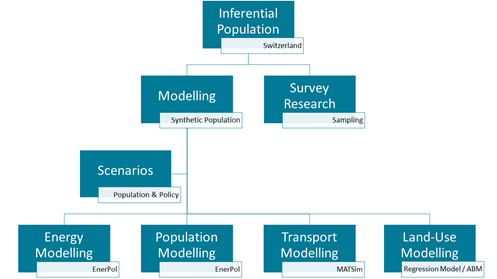Methods

The different nature of the tasks in the ISTP Swiss Mobility Lab require diverse methods to be further developed and applied in order to meet the requirements of the research projects. Methods can be divided in two categories: modelling and survey research, both of which are based on the same inferential population to achieve consistency in the output of the projects and to better understand the phenomenon of mobility as a whole.
One aim of the Swiss Mobility Lab is to determine how spatial changes in population densities and demand for services result in changes in the landscape.
Land-use and hydrological models are used to simulate the spatial impacts of changes in mobility modes and policies, energy production infrastructure and the climate on supply and demand for outdoor recreation.
In order to systematically gather information from a sample of the inferential population of the canton of Zurich and to quantitatively describe it, several surveys will be conducted. A broad range of survey designs will be applied –from general surveys, to name generators to estimate social networks, to experimental surveys such as framing and stated choice experiments. Even though the focus is on the development of online surveys, mixed-mode surveys are also used in order to boost the validity of the results. For instance, online surveys are connected to paper and pencil interviews.
To understand the demand for mobility infrastructure, robust population modelling is required. To assess complex behavioral patterns and their impact on mobility infrastructure, populations should be modelled at the individual person level.
In order to quantify the impacts of behavioral patterns, transport simulations addressing policy-related questions need to be conducted. As quick turnaround times of the simulations are required to address these policy-relevant questions, it is necessary to have high-performance simulation frameworks, so that many different hypothesized behavioral patterns can be simulated.
